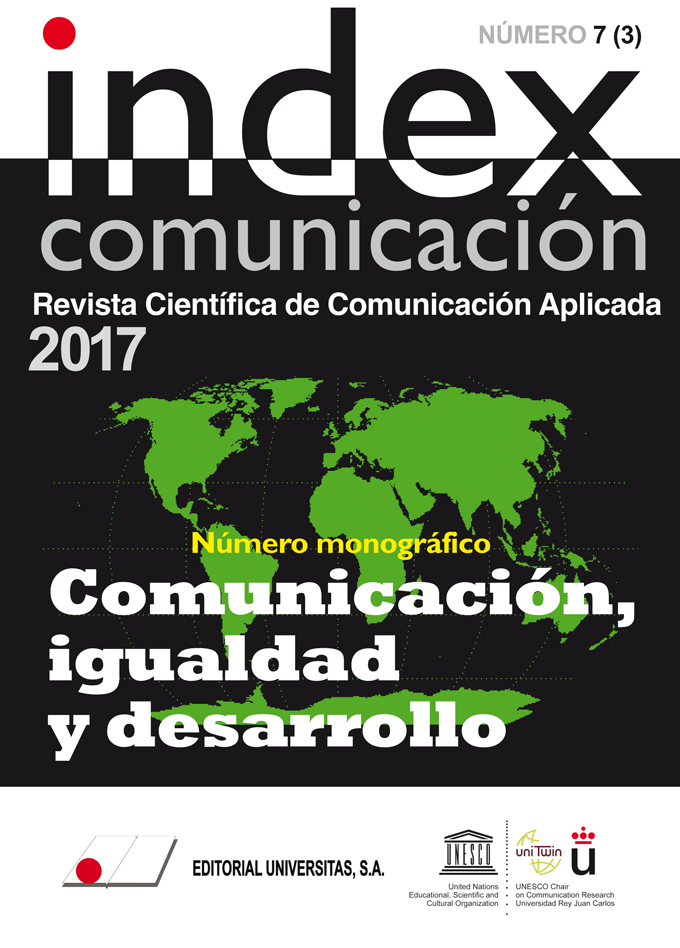From ICT to TRIC. A new socio-communicational reality in Cuba
Keywords:
ICT, TRIC, R-elational factor, Cuba, Social interactions, communication,Abstract
Technology has become one of the essential components of the contemporary world. Technological advances and their repercussion in society have become a new way of interacting and communicating socially, which represents new relationships between the Social System (SS) and the Communication System (SC). The R-elational Factor of TRIC provides a glimpse of this phenomenon beyond the mere technical component, because by introducing the term relational attention is shifted to the possible air of interaction, which can arise from this platform. This paper presents a contextualization of TRICs to the Cuban context. For this, the use of these technologies and the relationships derived from their use in different social areas, such as the educational one, are analyzed. In the same way it gathers some of the main theoretical conceptions about this phenomenon, which are taken as starting point for the analysis.
Metrics
References
Aranda, D.; Marta-Lazo, C. y Gabelas, J.A. (2012): ‘Per què les TRIC i no les TIC’, en COMeIN, 9. Disponible en: http://www.uoc.edu/divulgacio/comein/es/numero9/articles/Article-Dani-Aranda.html.
Chiecher, A. C. (2013): ‘Interacciones entre alumnos en entornos mediados por TIC. Un análisis social de los intercambios’, en RIED, Revista Iberoamericana de Educación a Distancia, 16(1), 85-107. Recuperado el 1 de febrero de 2017 desde: http://revistas.uned.es/index.php/ried/article/view/2061/1937
Figueredo, O. y Domínguez, L. E. (2017): ‘ETECSA tiene la palabra’, en Cubadebate. Recuperado el 10 de julio de 2017 desde: http://www.cubadebate.cu/ETECSA-tiene-la-palabra(+InfografíasyVideo) Cubadebate.htm
Gabelas, J.A. (2012): ‘La R de las TRIC’, en Habitaciones de cristal (blog). Recuperado el 10 de julio de 2017 desde: http://educarencomunicacion.com/2012/04/la-r-de-las-tric/
Gabelas, J. A. y Marta-Lazo, C. (2012): ‘HpV y competencias digitales (2)’, en Habitaciones de cristal (blog). Recuperado el 1 de febrero de 2017 desde: http://educarencomunicacion.com/2012/05/HpV-y-competencias-digitales-2/
Garrido-Lora, M.; Busquet Duran, J. y Munté-Ramos, R. A. (2016); ‘De las TIC a las TRIC. Estudio sobre el uso de las TIC y la brecha digital entre adultos y adolescentes en España’, en Anàlisi. Quaderns de Comunicació i Cultura, 54, 44-57. Disponible en http://dx.doi.org/10.7238/a.v0i54.2953
Giddens, A. (2000): Un mundo desbocado. Los efectos de la globalización en nuestras vidas. Madrid: Taurus.
Hirsjärvi, I. (2013): ‘Alfabetización mediática, fandom y culturas participativas. Un desafío global’, en Marta-Lazo, C. y Gabelas, J. A. (2016): Comunicación digital. Un modelo basado en el factor R-relacional. Barcelona: Editorial UOC.
Luhmann, N. (2000): La realidad de los medios de comunicación de masas. Barcelona: Anthropos.
Marta-Lazo, C. y Gabelas, J.A. (2016): Comunicación digital. Un modelo basado en el factor R-elacional. Barcelona: Editorial UOC.
Prensky, M. (2001): ‘Nativos Digitales, Inmigrantes Digitales’, en On the Horizon, 9(6), diciembre. MCB University Press. Recuperado el 10 de julio de 2017 desde: http://recursos.aprenderapensar.net/files/2009/04/nativos-digitales-parte1.pdf
Prensky, M. (2010): ‘Nativos e inmigrantes digitales’, en Cuadernos SEK 2.0. Recuperado el 10 de julio de 2017 desde: http://www.marcprensky.com/writing/Prensky-NATIVOS%20E%20INMIGRANTES%20DIGITALES%20%28SEK%29.pdf
Rubio, V. (2016): ‘ETECSA: La conectividad a Internet seguirá expandiéndose en Cuba’, en Cubasí.cu. Recuperado el 1 de febrero de 2017: http://cubasi.cu/cubasi-noticias-cuba-mundo-ultima-hora/item/49531-etecsa-la-conectividad-a-internet-seguira-expandiendose-en-cuba
Unión Internacional de Telecomunicaciones (2015): Informe de Medición de la Sociedad de la Información. Recuperado el 1 de febrero de 2017 desde: http://www.itu.int/en/ITU-D/Statics/Documents/publications/misr2015/MISR2015-ES-S.pdf
Valkenburg, P. M. y Peter, J. (2011): ‘Online communication among adolescents: an integrated model of its attraction, opportunities, and risks’, en Journal of Adolescent Health, 48, 121-127. Disponible en http://dx.doi.org/10.1016/j.jadohealth.2010.08.020
Vargas, B. (2017): ‘Coherencia y consenso en las TRIC’, en Habitaciones de cristal (blog) Recuperado el 10 de julio de 2017 desde: http://educarencomunicacion.com/2017/03/coherencia-y-consenso-en-las-tric/
Zallo, R. (2016): Tendencias en Comunicación: cultura digital y poder. Barcelona: Editorial Gedisa.
Published
How to Cite
Issue
Section
License
Authors who submit to this journal agree to the following terms:
Authors retain copyright and ensure the magazine's right to be the first publication of the work as licensed under a Creative Commons Attribution-NoComercial 4.0 International License that allows others to share the work with an acknowledgment of authorship of the work and the initial publication in this magazine, with no commercial purpose.
Authors can establish separate additional agreements for non-exclusive distribution of the version of the work published in the magazine (for example, to an institutional repository or publish it in a book), with an acknowledgment of its initial publication in this journal.
It allows and authors are encouraged to disseminate their work electronically (eg, in institutional repositories or on their own website) prior to and during the submission process, as it can lead to productive exchanges, as well as a citation more early and most of the published work (See The Effect of Open Access).















